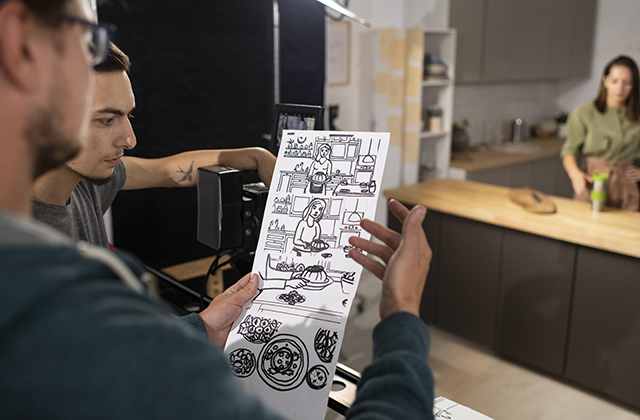In the creative world of filmmaking, animation, and video game development, there exists a behind-the-scenes marvel that often goes unnoticed but plays a crucial role in bringing captivating stories to life – storyboarding. It is an art form that acts as a visual blueprint for any project, mapping out scenes, actions, and emotions, and is akin to the heart and soul of any narrative-driven venture. In this article, we delve into the enchanting journey of storyboarding, exploring its significance, and the joyous process of crafting these visual masterpieces.
Once upon a time, a visionary artist named Harold Foster discovered the importance of pre-visualization in creating engaging comics. Inspired by this realization, he introduced the concept of storyboarding in the early 1930s. Since then, storyboarding has evolved and become a foundational pillar in the entertainment industry, providing directors, animators, and designers with a way to convey their vision to the entire team.
The storyboarding process begins with a skilled artist who translates the written script or concept into a series of sequential images. These illustrations serve as a guide, enabling the creative team to understand the flow of the story, the composition of each shot, and the transitions between scenes. The storyboards act as a common language, fostering seamless communication among all team members, ensuring that everyone is on the same page before production begins.
Storyboarding, often referred to as the “blueprint of the film,” not only aids in visualizing the narrative but also allows for experimentation and exploration of different ideas. Directors can experiment with camera angles, pacing, and shot compositions, refining their vision before committing valuable resources to the production phase. This flexibility during the storyboard process often leads to richer storytelling and, in some cases, serendipitous discoveries that enhance the final product.
As the tv storyboard artists embark on their fun-filled journey, they delve deep into the story’s nuances, characters, and the world they are about to create. Their pens become the wands of wizards, and their canvas transforms into a realm where imagination knows no bounds. Storyboarding provides them with the unique opportunity to breathe life into each frame, conveying emotions, suspense, and excitement through mere strokes of their pencils.
Storyboarding also plays a pivotal role in fostering collaboration among various departments. From the art department and cinematography to visual effects and animation teams, the storyboard serves as a creative hub that unites diverse talents, aligning their efforts towards a unified vision.
The iterative process of refining storyboards is akin to crafting a masterpiece. Directors and creative heads review and provide feedback, leading to revisions and fine-tuning until the storyboard reaches perfection. This collaborative dance encourages the free flow of ideas, nurturing a harmonious environment where innovation and creativity are celebrated.
However, the true magic of storyboarding lies not only in the final outcome but in the journey itself. Each stroke of the pencil represents a moment of excitement, wonder, and the joy of bringing imaginary worlds to life. The process is akin to a thrilling adventure, with the artists exploring uncharted territories and discovering hidden gems within the story’s twists and turns.
In the age of digital technology, storyboarding has embraced innovation too. Digital tools and software have amplified the ease and speed of the process, allowing artists to iterate and experiment more freely. Despite the advancements, the core essence of storyboarding remains rooted in artistic expression and storytelling.
As the journey of storyboarding nears its conclusion, and the final frames are sketched, the artists take pride in knowing that their creative contributions will leave a lasting impact on the project. Their work will lay the foundation for actors, animators, and designers to collaborate and create something truly magical.
In conclusion, the art of storyboarding takes filmmakers and artists on a joyous and fun-filled journey that begins with an idea and ends with a captivating visual narrative. It is a testament to the power of imagination and the collective efforts of a talented team. From the earliest days of Harold Foster’s visionary exploration to the modern digital era, storyboarding continues to be an invaluable tool in shaping the entertainment industry’s most cherished stories. So, the next time you watch your favorite movie or play your most beloved video game, take a moment to appreciate the artistry of storyboarding that made it all possible. You will learn from this article about the art of storyboarding.
